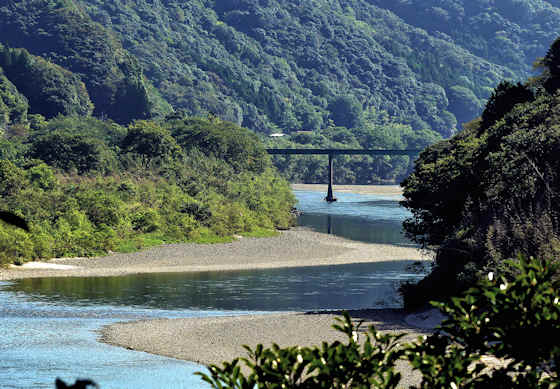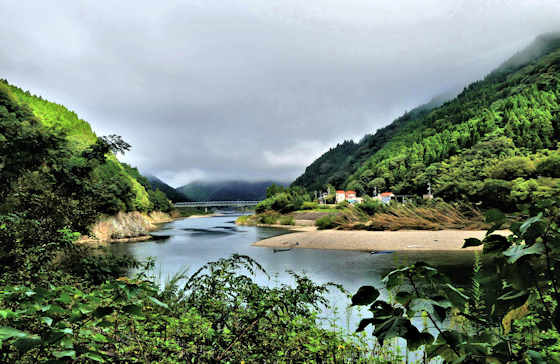At the far end of Tanomura, the almost-deserted settlement on the right bank of the Gonokawa River, is a small shrine hidden back where the former farmland meets the hillside, the kind of location where people built their homes. According to Google Maps, it is no longer marked as a shrine. Not sure what criteria they are using, but the shrine still stands but has probably not seen a ceremony in quite a few years.
It was an Omoto shrine I believe, and the doors were unlocked, something normal for shrines in the countryside I think. The structure hanging from the ceiling is a tengai, under which kagura was performed. About 6 to 8 years ago I stopped in and everything was just about as it is now. Probably there were a few more inhabitants back then. Not sure what the Japanese equivalent of deconsecration is, but the shrine may not have been used, but is still technically a shrine, so I find google maps to be less and less accurate and truthful
It's about halfway between what used to be the previous and next stations and I doubt anyone from Tanomura ever used the train in the past twenty years.
From here there are no settlements until Kawahira. No solitary farmhouses or isolated rice paddies. The narrow road and former train line cling to the edge of the steep slopes.
On the opposite bank, there is a main road and a lot more settlements. Also, lots of construction work building up embankments and raising the level of the road to counter the increasing floods Quite a lot of brand new houses are built to replace those demolished for the "improvements".
About twenty years ago I floated down the river on a Dragon Boat and from down at the waters level you could barely ever see the roads or any man-made structures...... I think the new construction is changing that.
Before coming into Kawahira a small roadside Buddhist shrine......... It has seen better days, but someone comes from some distance away sometimes to give it a sweep and to add green offerings..... i suspect a very elderly person, and in all likelihood when they pass away there will be no one left to remember the story and history behind this little altar
The previous post in this series following my walk up the Gonokawa River to its source was
Around the Next Bend.

































































